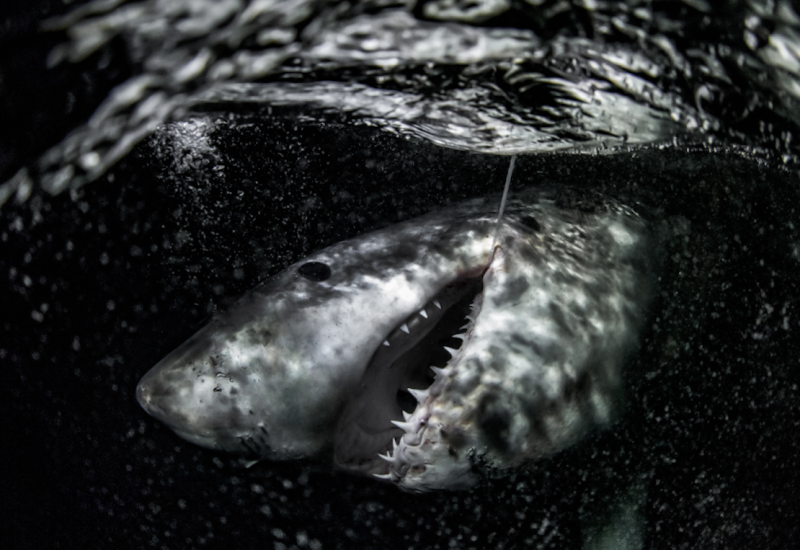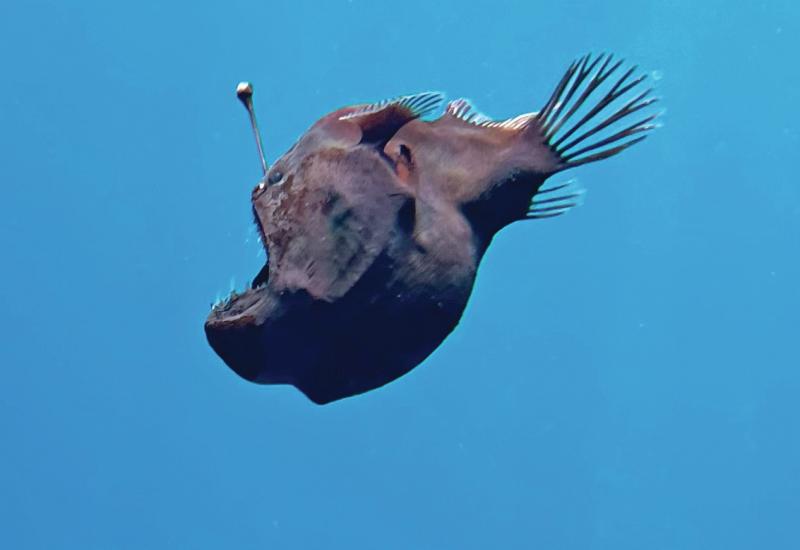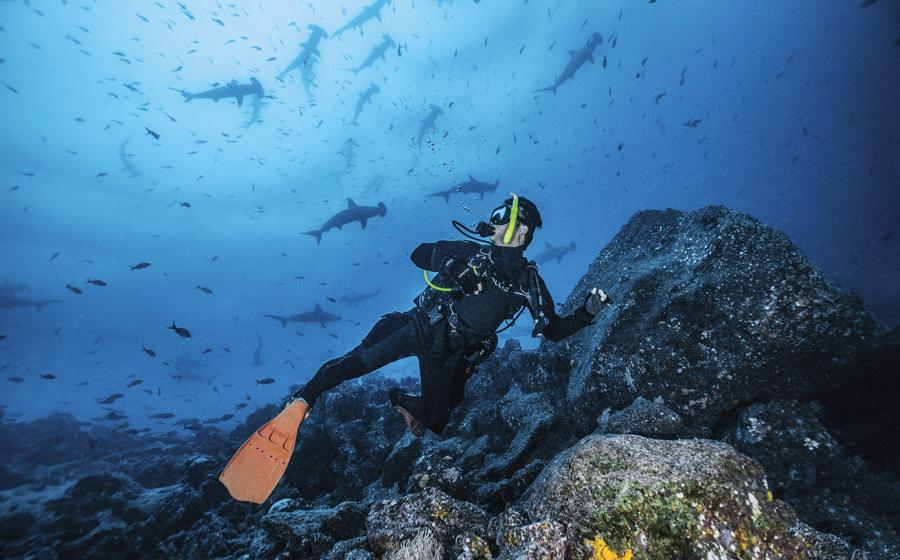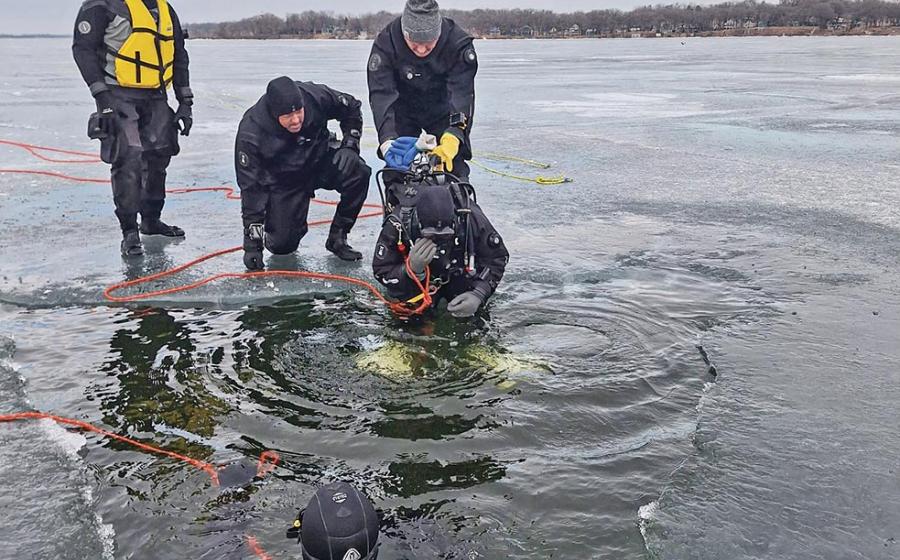The 17 Most Bizarre Creatures in the Ocean
The ocean is full of amazing creatures, from deep-sea vents thousands of feet beneath the water's surface to sunlit coral reefs. Here are the most fascinating and bizarre marine creatures in the ocean, from the toothy bobbit worm, to the unfortunate-looking blobfish.
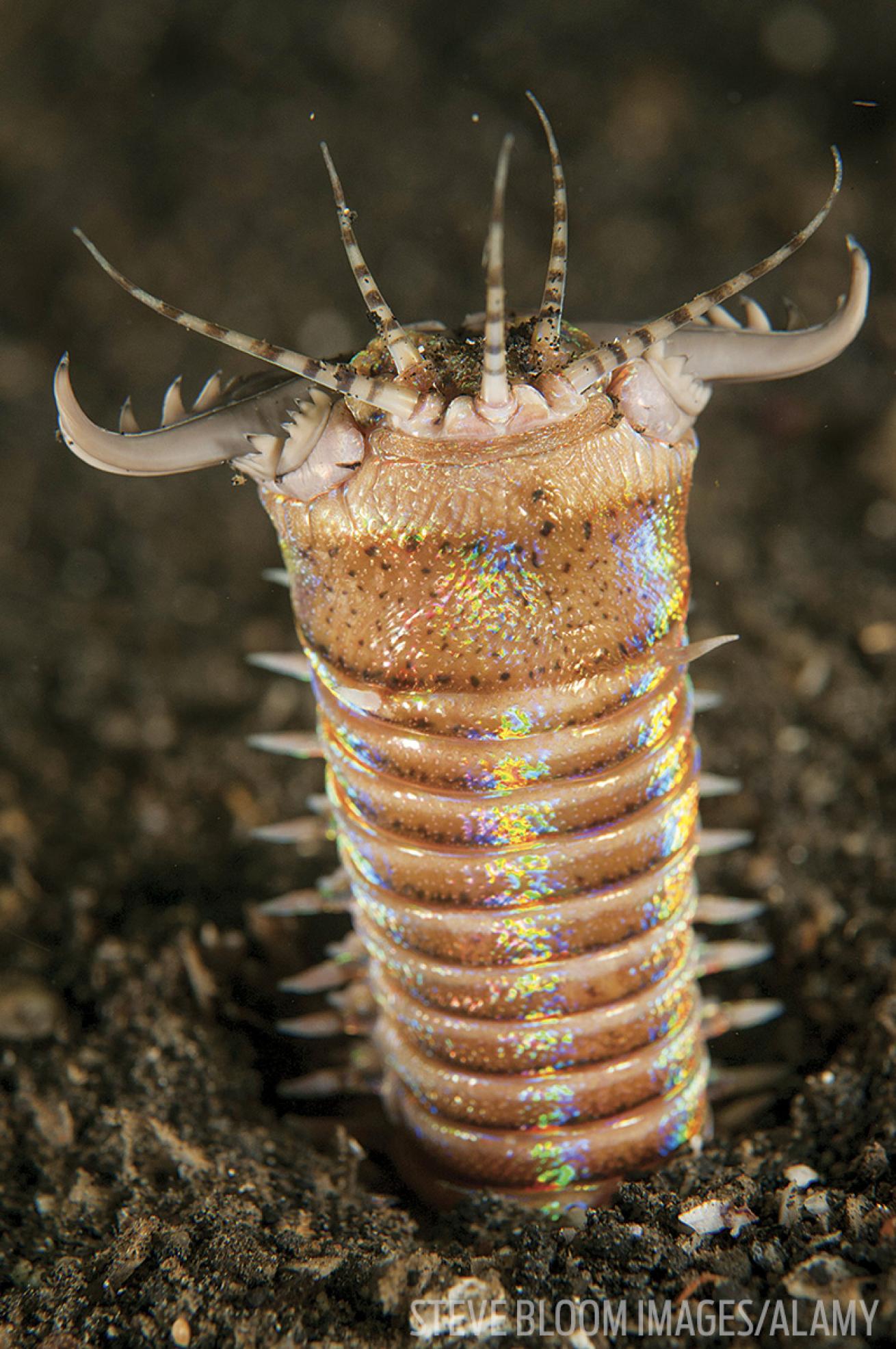
Steve Bloom Images/AlamyA bobbit worm, or Eunice aphroditois
>> Bobbit Worm
Eunice aphroditois is ingeniously named after the infamous Bobbitt family incident of the early ’90s in which Lorena Bobbitt cut off her husband’s manhood with a kitchen knife. The hunting method of this giant polychaete worm is said to resemble Lorena’s modus operandi. The worm emerges from the silty ocean floor at dusk and waits motionless with its iridescent body standing at attention 6 inches out of the substrate.
The almost blind worm detects tiny movements of the water with sensory bristles that adorn its sides. It awaits the approach of a hapless fish before slamming shut a pair of scissorlike mandibles across its prey. This monstrous worm can reach almost 10 feet in length, and is surely the stuff of nightmares for fishes.
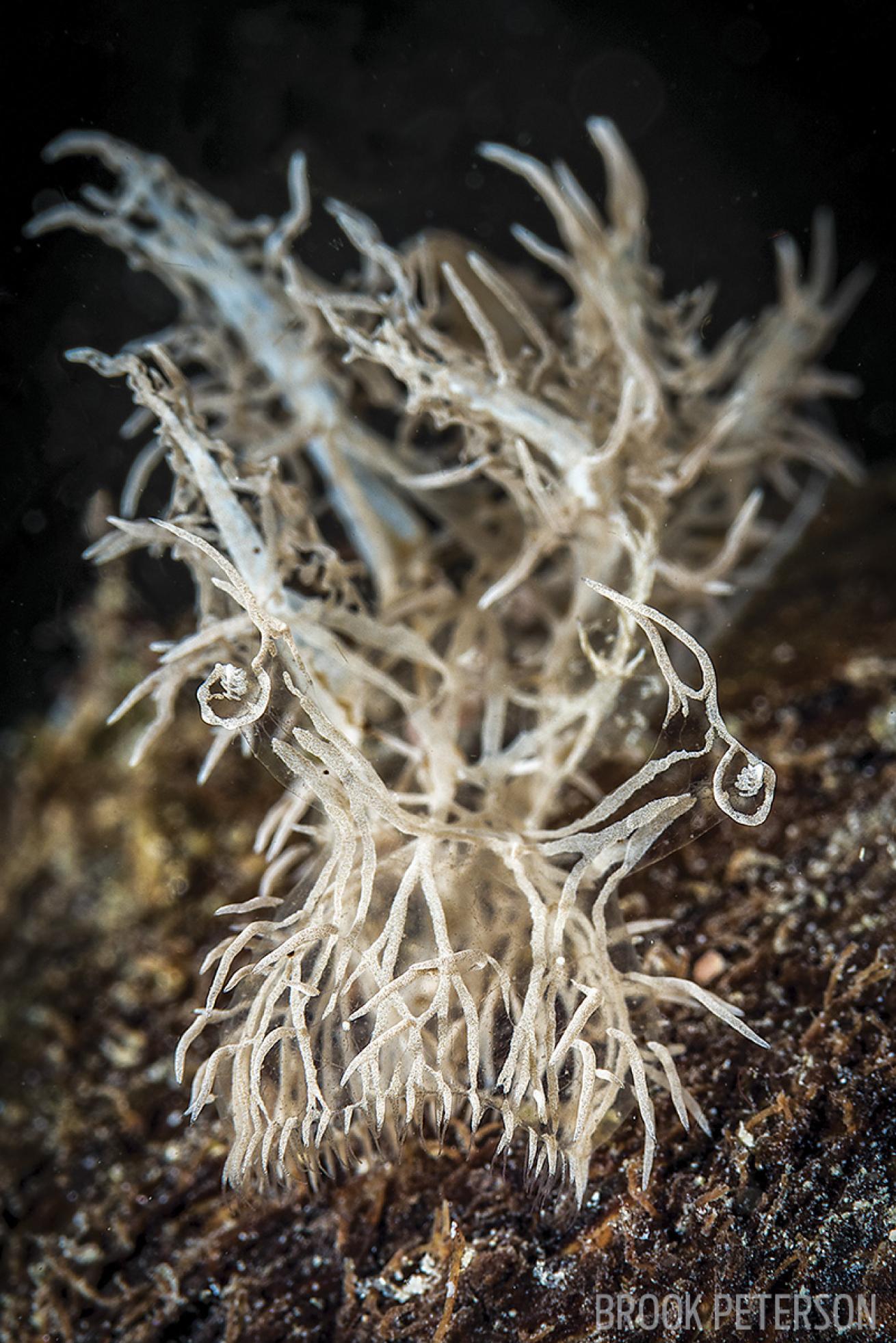
Brook PetersonA hooded nudibranch, or Melibe leonina
>> Hooded Nudibranch
These translucent nudibranchs are found around the globe and reach up to a foot in length. Some larger individuals have algae in their cells, procured from their food, that provide energy for Melibe leonina using sunlight and are fertilized by its waste products.
Others are carnivorous and have a unique feeding strategy. They have a large tentacle-rimmed hood, known as an oral veil, which can be extended out from the front of the head like a net to trap prey items.
They are also able to swim, using snakelike movements that can propel them short distances to new feeding grounds.
>> Dumbo Octopus
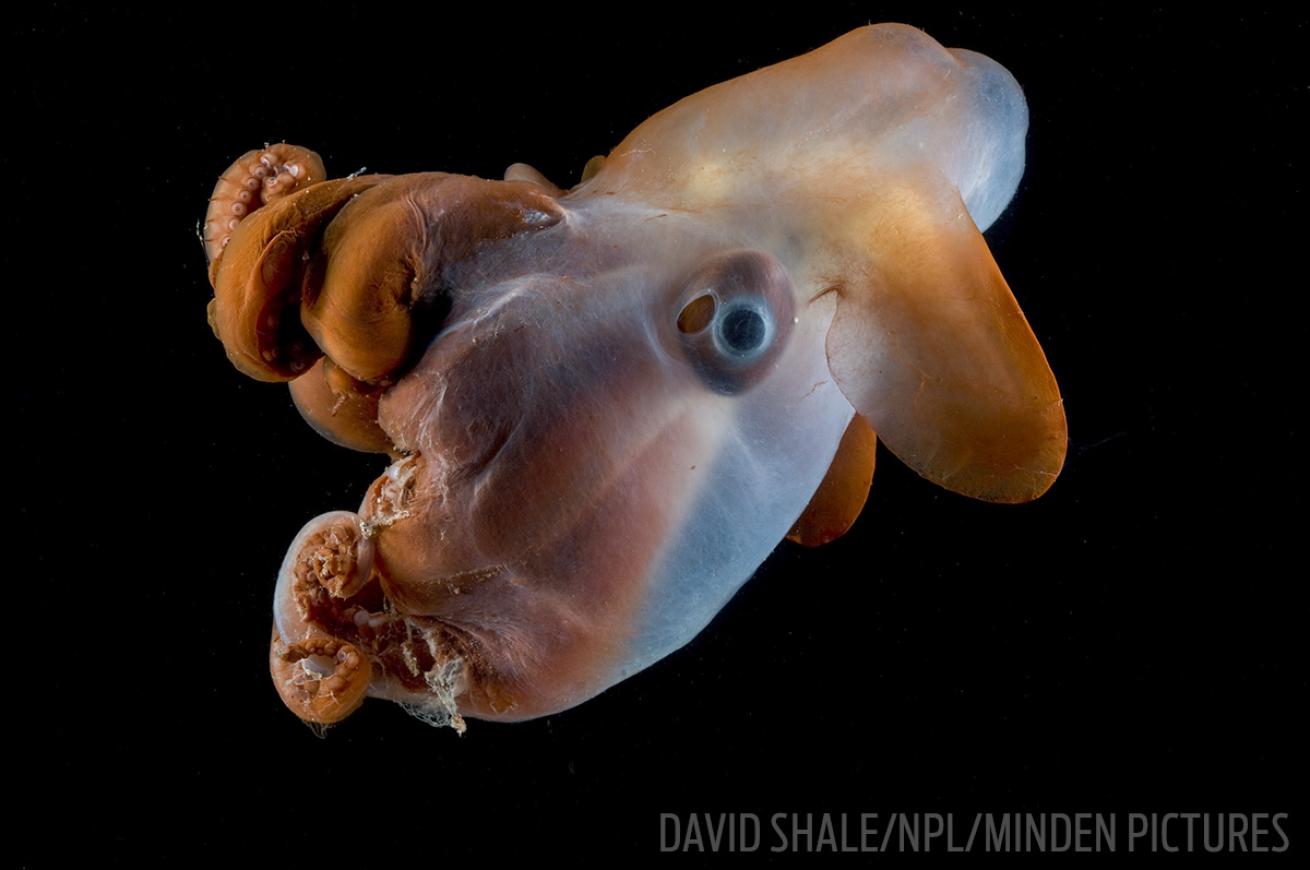
David Shale/NPL/Minden PicturesA dumbo octopus
Swimming gracefully through the depths of the world’s oceans, dumbo octopuses capture our imagination. These 14 species of umbrella octopuses flap large ear-like fins, located on either side of the head, to propel themselves along, resembling the Disney cartoon character Dumbo.
They are found across the world’s oceans at depths of 1,600 to 24,000 feet, where they are among the largest animals. One species has been recorded at more than 6 feet in length and weighing 13 pounds. They live on, or close to, the seafloor, where they hunt a variety of invertebrates. These big-eared creatures are unusual for octopuses because they’re able to swallow their prey whole.
>> Armored Snail
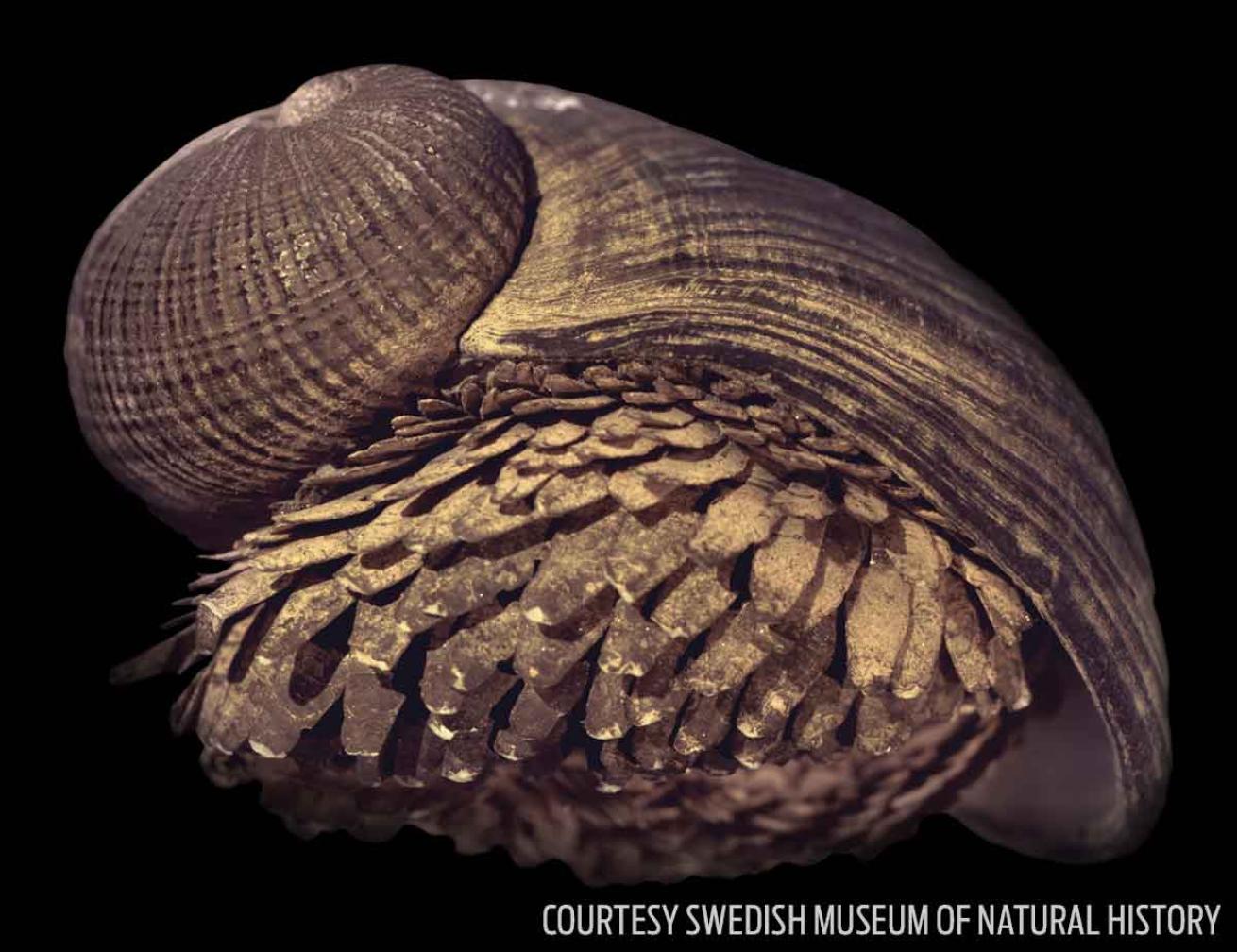
Courtesy Swedish Museum of Natural HistoryA scaly-foot gastropod, or Chrysomallon squamiferum
Chrysomallon squamiferum is found around inhospitable Indian Ocean hydrothermal vents, extreme ecosystems in 8,000 feet of water. Water temps can reach over 700°F, and biological communities sprout up where the salt water and extreme heat interact. Here, armored snails use iron sulfide to build their shells — the only animals on Earth to use iron in this way. Black metallic scales also cover the foot.

Mike VeitchA stargazer fish
>> Stargazers
Lurking just beneath the sandy seafloor is a fish that strikes terror into the hearts of small fishes across the world’s shallow seas.
The stargazer’s entire body is hidden beneath the sand, with its eyes and mouth flush with the seabed. To entice hapless fishes within striking distance of its cavernous mouth, the stargazer uses its wormlike tongue as a lure.
When fish come to investigate, the stargazer opens its mouth so quickly that the vacuum created pulls the fish inward to its fate.
>> Vampire Squid
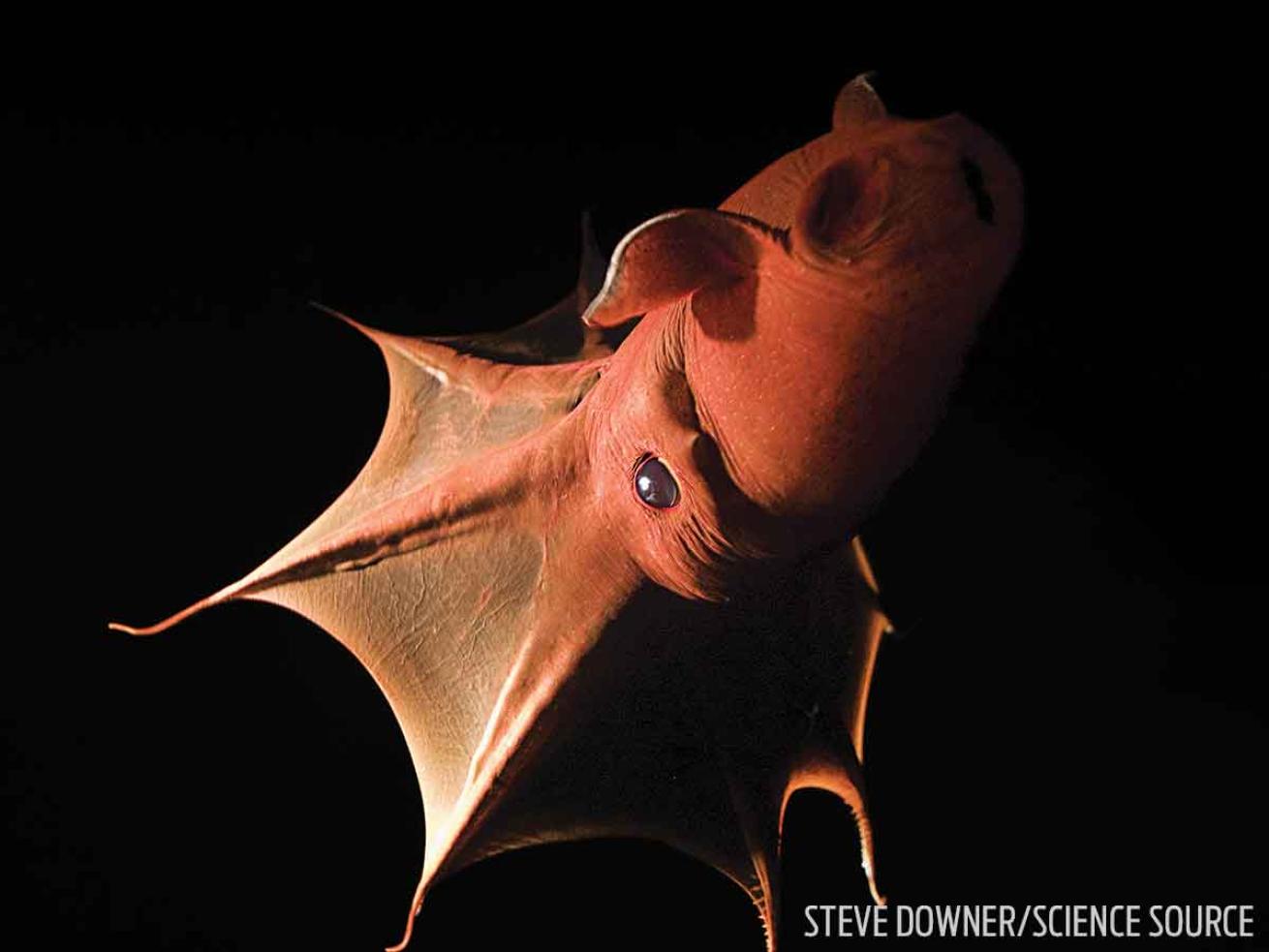
Steve Downer/Science SourceA vampire squid
Despite its reddish hue and cape-like webbing that may call Count Dracula to mind, Vampyroteuthis infernalis is harmless. This deep-dwelling species — typically living in 2,000 to 4,000 feet of water — can flip its webbing inside out as a form of protection, revealing rows of soft tooth-like spines called cirri. This scaredy-cat is a far cry from all other cephalopods, which hunt live animals.
>> Black Swallower
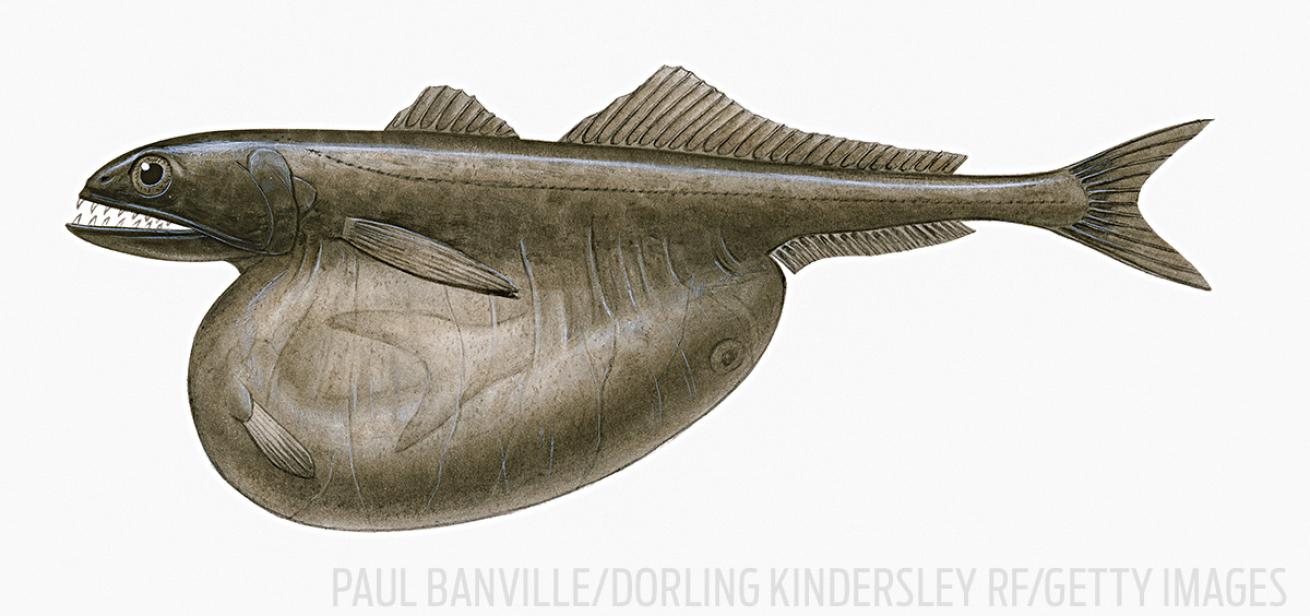
Paul Banville/Dorling Kindersley RF/Getty ImagesAn illustration of a black swallower
The blackness of our deepest oceans is a tough place to eke out a living. To survive, residents must make the most of feeding opportunities when they arise. The black swallower is ruled by its stomach: It can eat fishes twice its own length and 10 times its mass. However, its eyes can be bigger than its stomach. Many of the known specimens have been found when a bloated swallower washed ashore having eaten a meal too large to digest.
>> Fangtooth Fish

Jason BradleyA fangtooth fish
In the eerie blackness of the world’s deepest seas, the fangtooth fish strikes fear in the hearts of other fishes. Lurking at 15,000 feet, with a mouth full of long, needle-sharp teeth, the fangtooth has adapted to impale any prey item, big or small. Unlike most deep-sea fishes, it’s an active hunter rather than an ambush predator.
Despite its ferocious demeanor, the fangtooth measures a little more than 6 inches in length as an adult. Juveniles and adults look so much different that in the 1800s they were thought to be distinct species. Juveniles are found as shallow as 150 feet, migrating into the depths as they mature. It is believed that males are parasitic of females and attach permanently onto them to fertilize the eggs.
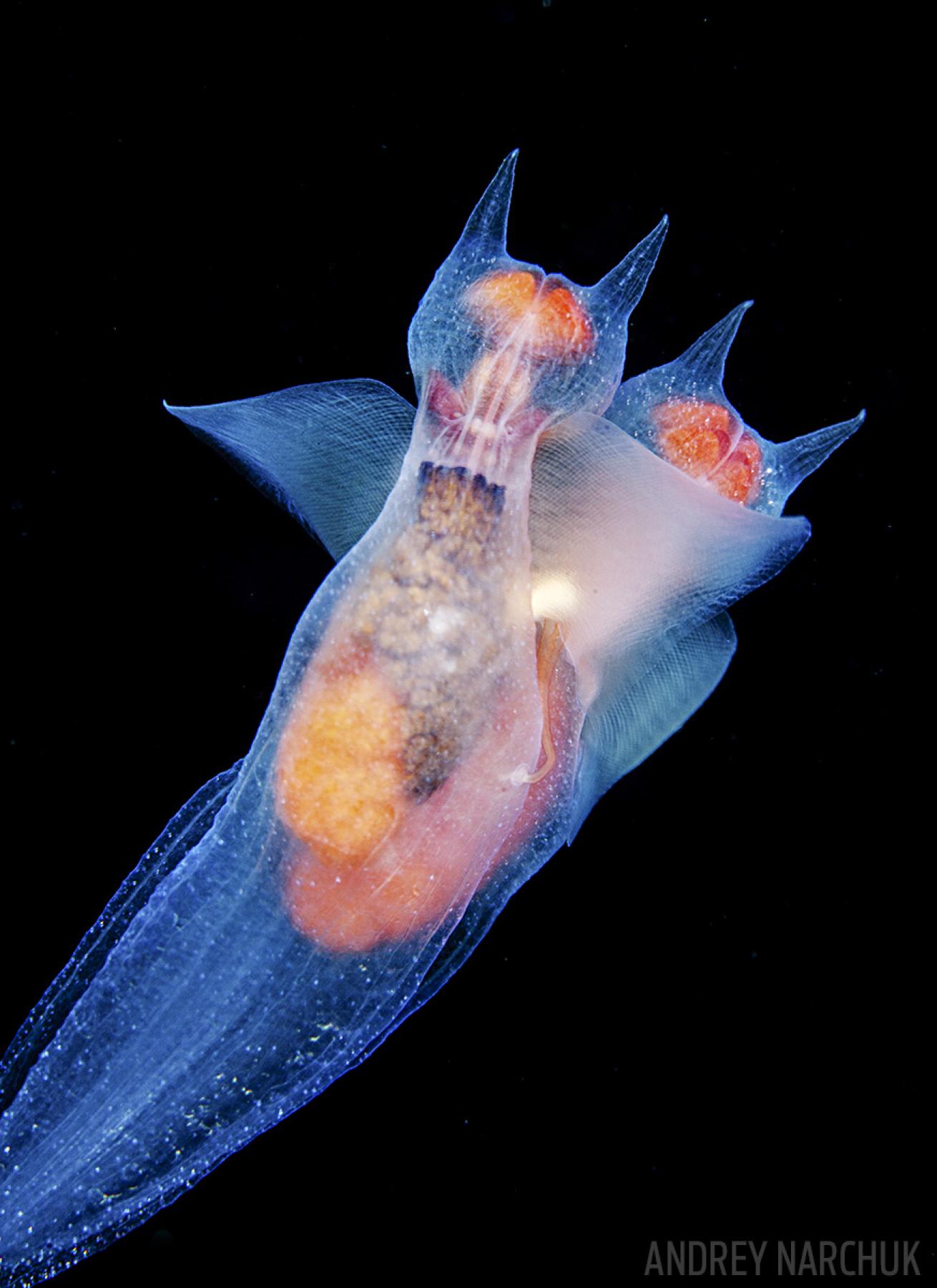
Andrey NarchukA sea angel
>> Sea Angel
Incredibly, flying through the waters of the world’s oceans are a group of transparent, winged sea slugs known as sea angels. Sea angels quickly lose their shell after hatching, and the foot of the slug develops into a pair of wings. They can “fly” at speeds of up to 4 inches per second, which is fast for an animal just 2 inches long.
They are most common and conspicuous in polar waters, but some smaller species are also found in the tropics. They are rarely preyed upon because they produce a noxious chemical to deter predators. A species of crafty Antarctic amphipod exploits the sea angel’s toxin, often carrying a sea angel on its back to ward off its own predators.
>> Tongue-Eating Louse
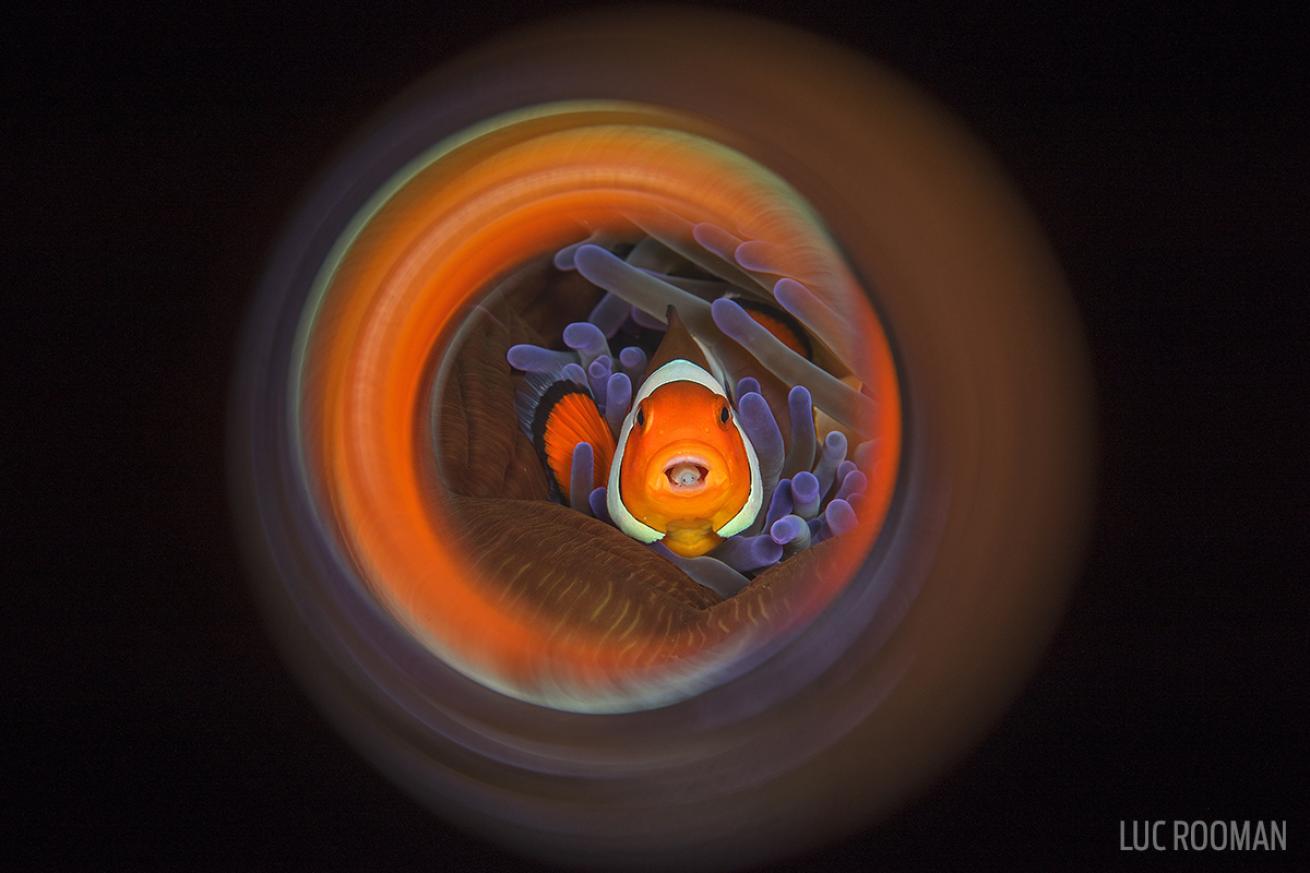
Luc RoomanA tongue-eating louse, seen with a host anemonefish
This isopod crustacean — from the same group as pill bugs — must be one of the most stomach churning of all parasites. These tongue eaters are a huge pest in global fish farms; however, on coral reefs divers can sometimes spot them in an unusual place: the mouths of anemonefishes. All that’s usually visible of this sinister parasite in the anemonefish’s open mouth are the beady, black eyes set on a white head in the place you’d expect the tongue to be. Initially, the parasite grub crawls through the fish’s gills and attaches to the tongue.
Over time, it kills off the tongue and takes its place in the mouth. The fish can even use the tongueshaped parasite to grip and manipulate food. The large louse visible at the front of the mouth is actually the female. The male is located farther back in the throat. Like other isopods, the female has a pouch under her belly, similar to a kangaroo, where its larvae develop.
When they hatch, they quickly infect other local anemonefishes. Parasites, by definition, don’t aspire to kill their host. After all, if the host dies, the parasite loses its home and food source. However, in the case of the tongue-eating louse, some individuals can grow to be so large that the hapless anemonefish struggles to close its mouth. Eventually, as you might imagine, this hinders the host’s ability to eat.
>> Sea Pig
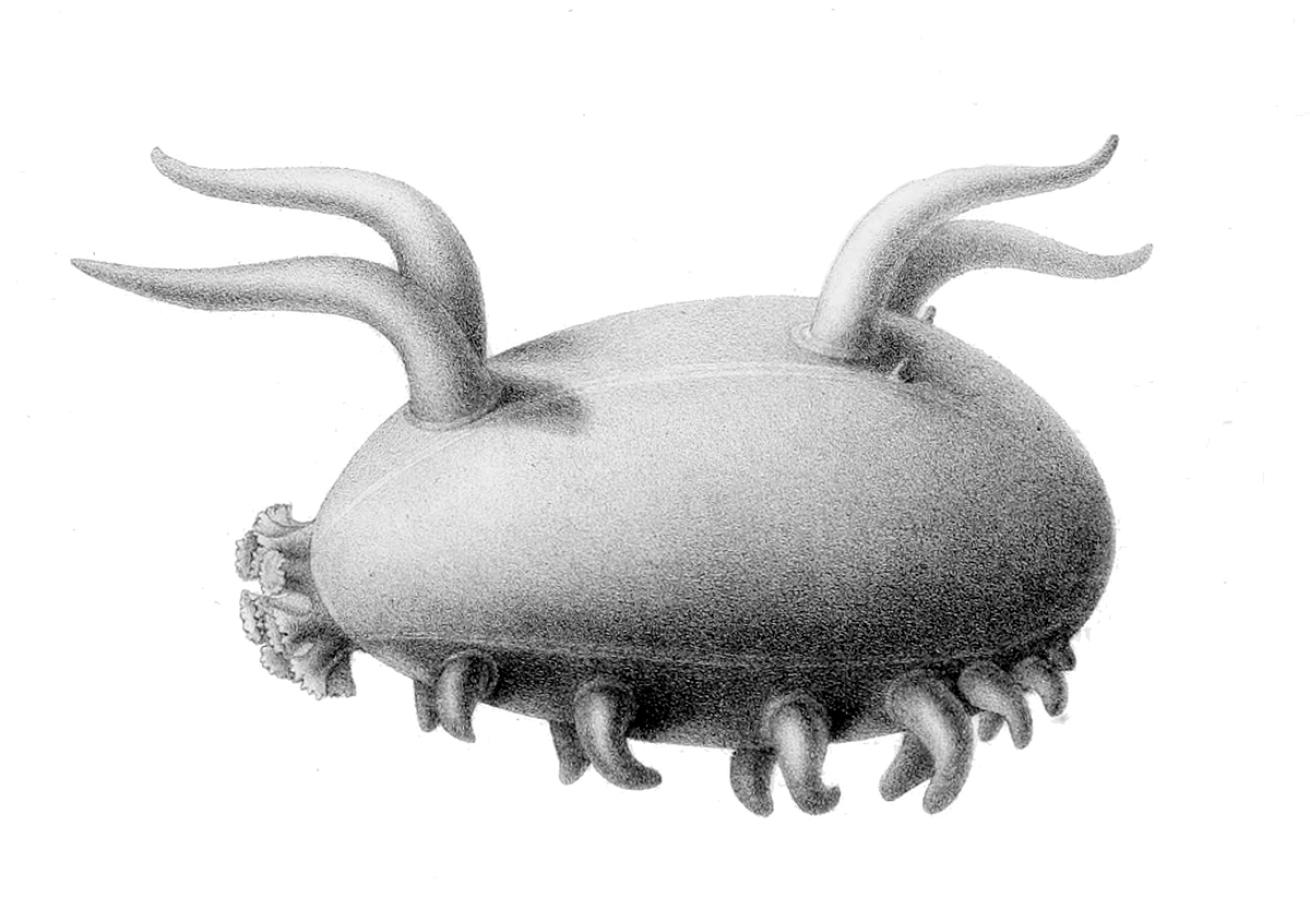
Wikipedia Commons/Public DomainAn illustration of a sea pig, or Scotoplanes globosa
The daintily named sea pig is actually a kind of locally abundant sea cucumber that inhabits the world’s abyssal plains up to 3.7 miles beneath the surface. It gets its name from a characteristic pink, eggplant-shaped body and bloated legs that give it a porcine appearance. Like their shallower cucumber cousins, sea pigs play an important role in marine ecosystems. They feed on detritus that falls to the seafloor from the rich waters above, whether plankton or a whale carcass. They walk along on a few large tube feet, using a combination of muscle contractions and body fluids. Modified pairs of legs can act as antennae to detect food.
>> Yeti Crab

Ifremer/A. Fifis/Courtesy M. Segonzac (MNHN)Yeti crab
The yeti crab, Kiwa hirsuta, is a deep-sea hydrothermal vent species discovered by a marine biologist from the French institute IFREMER in 2005 near Easter Island. Living in the pitch-dark at around 7,200 feet deep, the crabs are completely blind. And as are many animals inhabiting this ecosystem, the yeti crab is pure white.
Like its namesake legend, the Abominable Snowman, the yeti crab has limbs that are covered in thick white hairs. These hairs are also covered in filamentous bacteria that give the crab an extraordinarily hairy appearance. In 2011, another species of yeti crab was discovered, and the role of these hairs became clearer. It appears that the crabs use their hairs as farmland for the filamentous bacteria that grow on them. They harvest and feed on these bacteria, and even wave their hairy arms in nutrient-rich vent seeps to fertilize their crop and increase their productivity.
>> Barreleye Fish

Danté Fenolio/Science SourceBarreleye fish, or Macropinna microstoma
This deep-dweller — also known as the spook fish (Macropinna microstoma) — has tubular eyes that protrude from its large transparent dome of soft tissue. Barreleyes live in complete blackness, and scientists believed their ultra-sensitive eyes were fixed and could search only for the silhouettes of prey overhead. Recently, though, researchers found that their eyes can pivot forward, which allows the fish to see prey in front of it.
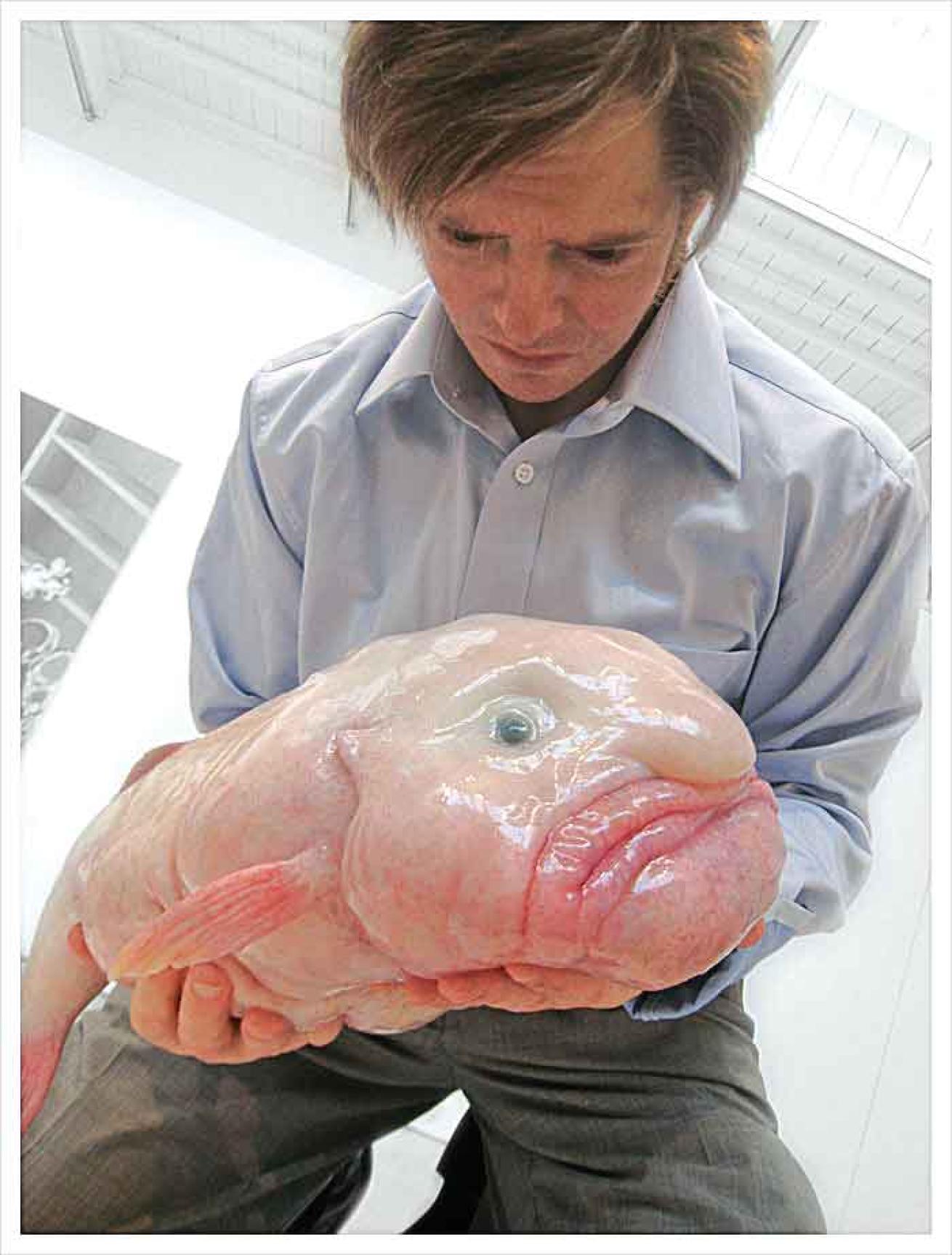
Inosipmax via Wikipedia Commons CC BY-SA 4.0A blobfish
>> Blobfish
The unfortunate-looking blobfish was voted the world’s ugliest animal. However, this fish from southern Australia is perfectly adapted for life at 4,000 feet.
In defense of the globular beast, when it’s not supported by the waters of the deep it’s hardly surprising it looks so sad. In fact, the gelatinous body of the fish serves a purpose. In the deep sea, swim bladders don’t function.
Thanks to a higher viscosity of water in cool, deep waters, the blobfish gains sufficient buoyancy from its gelatinous body alone to remain neutrally buoyant.
>> Stygiomedusa gigantea
Unlike most jellyfish, Stygiomedusa gigantea actually has no tentacles — only four “arms” that hang down like wavy curtains. This deep-sea jellyfish has arms that can reach 30 feet in length and also function as extensions of the mouth. Although they do not sting, they are believed to capture and trap plankton and small fish. Stygiomedusa gigantea has been sighted only about 100 times in the past 118 years.
It’s been found in every ocean except the Arctic, at depths ranging from 2,500 to 7,000 feet. The jelly’s dark-red color affords it a high level of camouflage at depth, as red light doesn’t penetrate deep water. Stygiomedusa gigantea has also been found with the rare fish Thalassobathia pelagica swimming around and living within its medusa. It is believed that the fishes share a symbiotic relationship.
>> Mexican Walking Fish
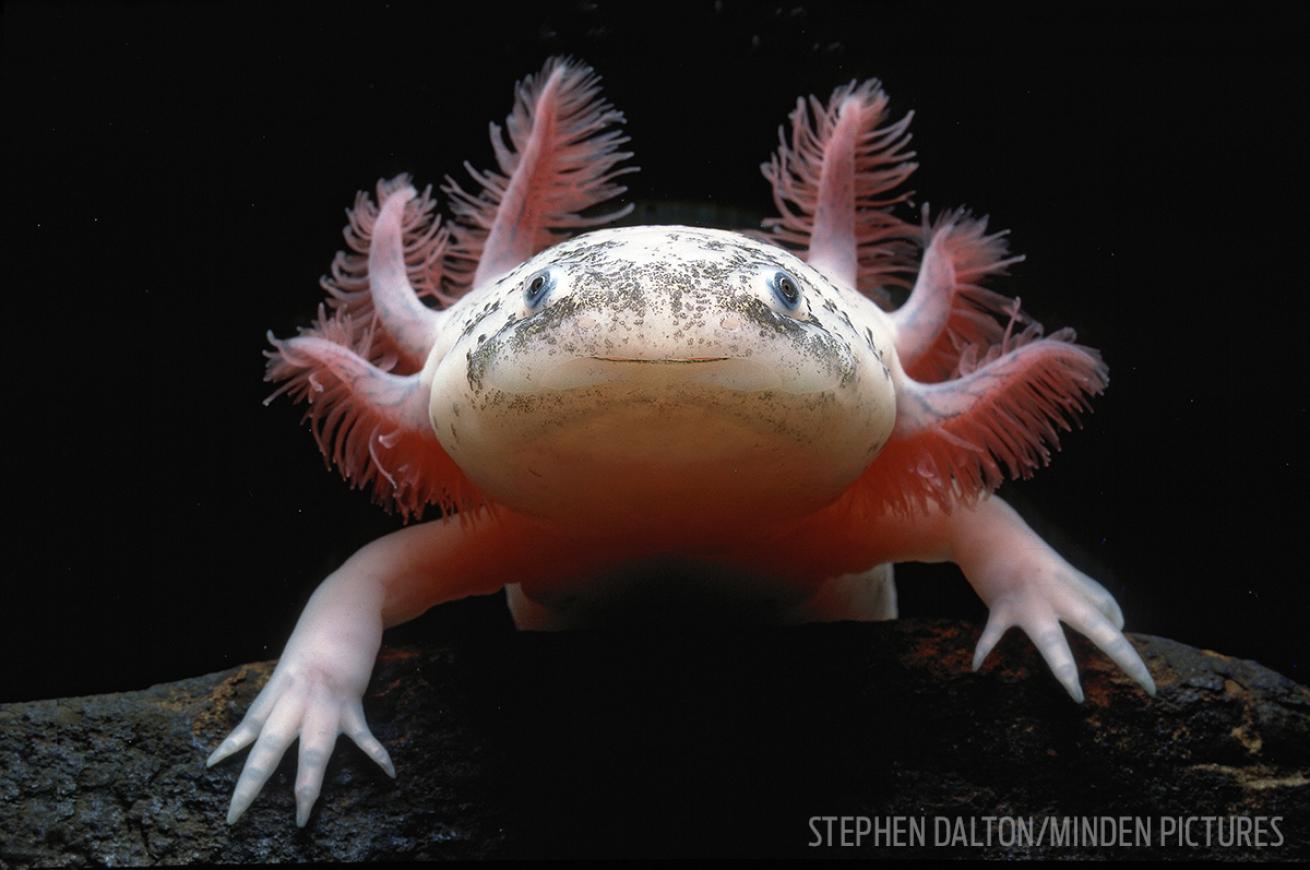
Stephen Dalton/Minden PicturesA Mexican walking fish, or axolotl
Though sometimes called the Mexican walking fish, the axolotl (Ambystoma mexicanum) is not a fish at all, but an aquatic salamander that remains in its larval form throughout its life. Because axolotls can regenerate most of their body parts, including entire limbs and portions of the brain and spine, they’re popular subjects in scientific-research labs.
Sadly, in the wild, axolotls are on the brink of extinction. They’re found only in local waterways near Mexico City, where urbanization and water pollution have exacted a toll on their population numbers. Compounding these environmental hazards are nonnative fish species such as Asian carp and African tilapia, which eat juvenile axolotls. These amphibians, which are popular in home aquariums, can be nearly black, chocolate brown, golden, cream colored, speckled or piebald.
>> Terrible Claw Lobster

Tin-Yam Chan/National Taiwan Ocean UniversityA terrible claw lobster
Discovered in 800 feet of water off the Philippines, the terrible claw lobster is a translucent pinkish-white crustacean measuring an inch in length. Just as dinosaur means terrible lizard, the scientific name of this lobster, Dinochelus, means terrible claw. The inside surface of this lobster’s claws are lined with long, spinelike teeth, the function of which is likely related to feeding or anti-predation.





